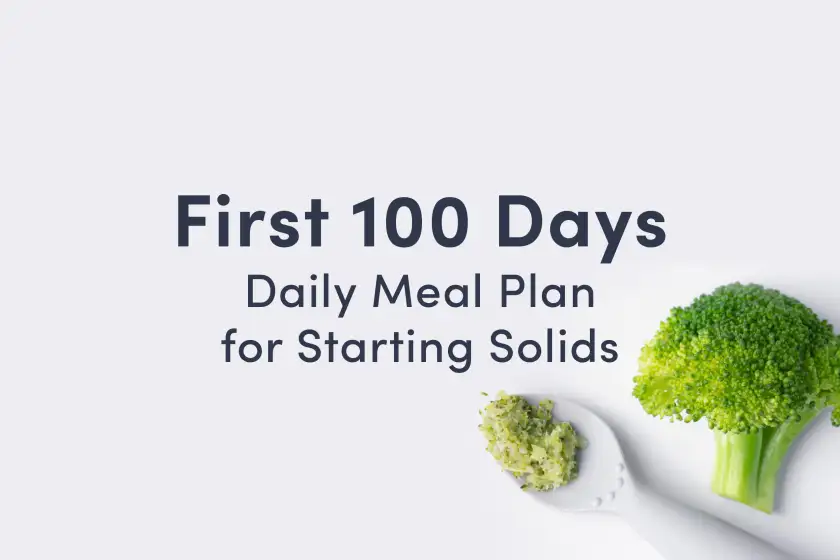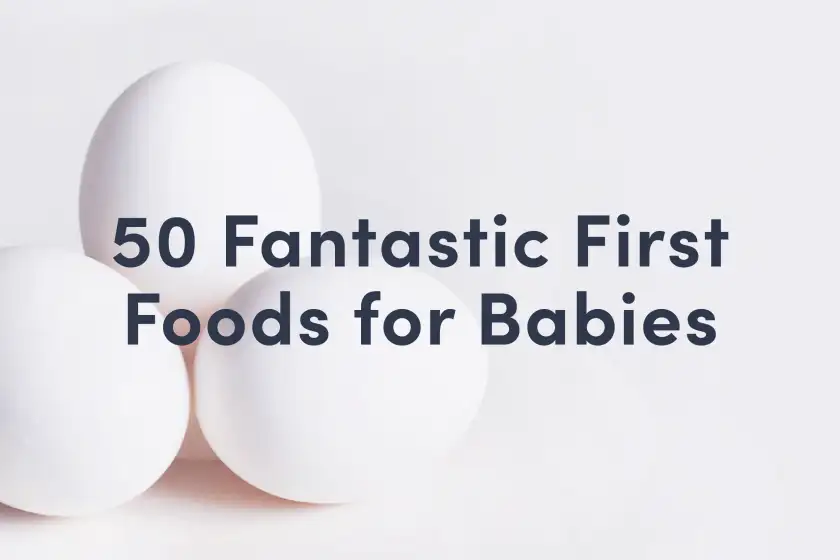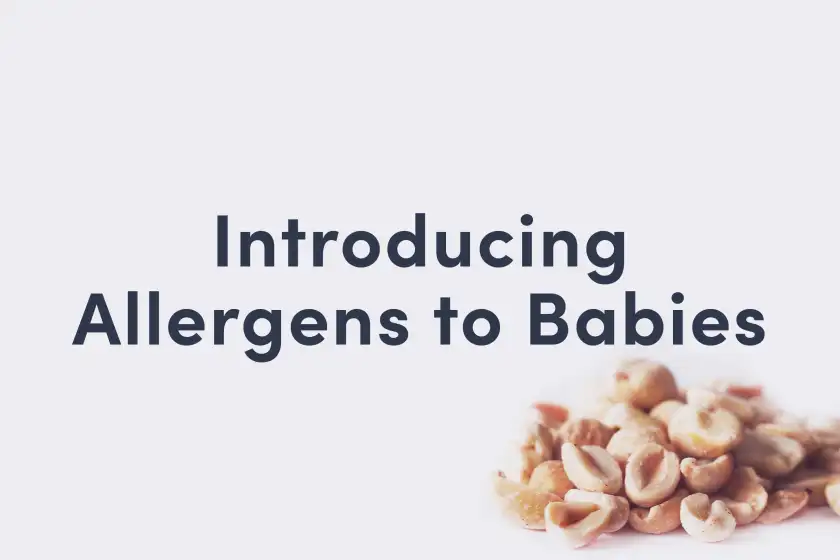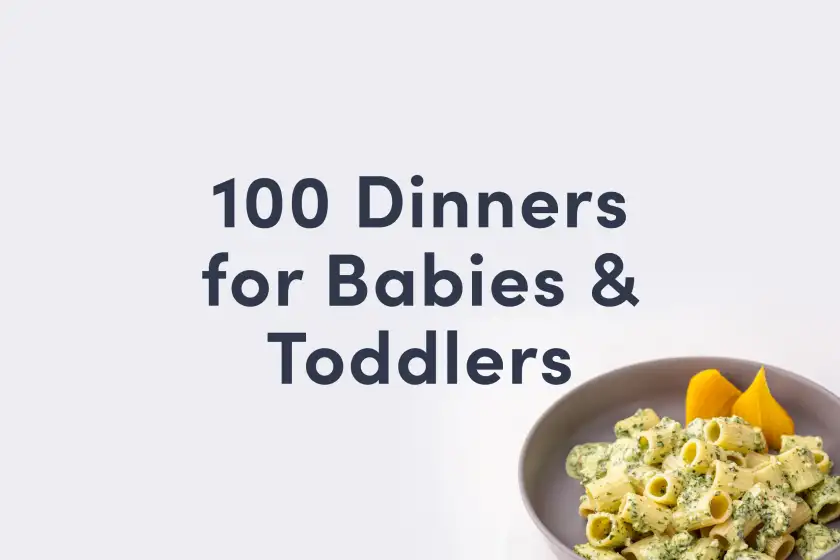Cannellini Bean
Legume
Age Suggestion
6 months
Iron-Rich
Yes
Common Allergen
No
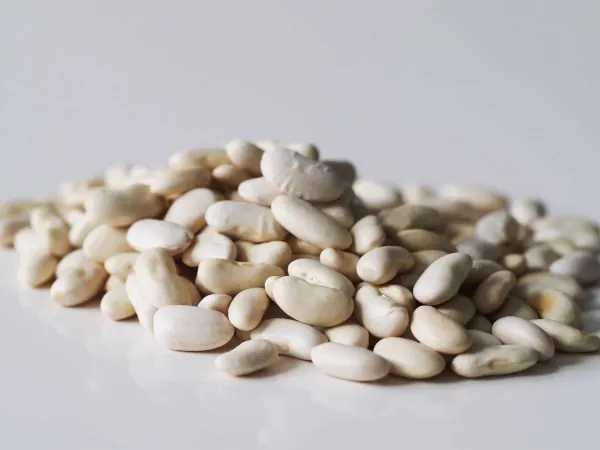
When can babies have cannellini beans?
Cannellini beans may be introduced as soon as baby is ready to start solids, which is generally around 6 months of age.
A close cousin of the kidney bean, the cannellini bean was first cultivated in South America and later brought to Europe, where it became a staple food. Also known as fazolia, lobia, safaid, and white kidney beans, this cream-colored legume has a nutty flavor, and soft texture that works well as a substitute in soups, stews, and recipes that call for other white beans.
Are cannellini beans healthy for babies?
Yes. Cannellini beans are rich in protein, carbohydrates, fiber, and an array of important micronutrients such as iron, calcium, choline, zinc, folate, and vitamin B6. Collectively, these nutrients support cell function and energy, overall growth and development, strong bones, and healthy brains. Iron is especially important for babies around 6 months of age, when their stores naturally become depleted. Cannellini beans also offer electrolytes like magnesium and potassium, as well as polyphenols, a category of plant nutrients that support the body’s resilience.
★Tip: Vitamin C helps increase absorption of iron from plant sources, so serve cannellini beans with other foods that are high in vitamin C, such as asparagus, bell pepper, cauliflower, or peas.
Are cannellini beans a common allergen?
No, cannellini beans are not a common food allergen. However, allergic reactions to white beans including cannellini beans have been reported. While allergies to beans in general are being increasingly recognized, white beans, such as cannellini beans, tend to be well-tolerated from an allergy perspective.
Bean allergies have also been reported in some patients with allergies to other legumes, including peanut and soybean (which are common food allergens). However, being allergic to one type of legume does not necessarily mean that an individual will be allergic to others, although the risk of more than one legume allergy can increase. Fortunately, most individuals with peanut or soy allergy are able to tolerate other legumes just fine.
Individuals with allergies to birch tree pollen and/or Oral Allergy Syndrome (also called pollen food allergy syndrome) may be sensitive to legumes, such as cannellini beans. Oral Allergy Syndrome typically results in short-lived itching, tingling, or burning in the mouth and is unlikely to result in a dangerous reaction.
As you would when introducing any new food, start by offering a small quantity for the first few servings. If there is no adverse reaction, gradually increase the quantity over future meals.
Are cannellini beans a choking hazard for babies?
Yes. Cannellini beans are small, rounded, and can be firm, especially when raw or undercooked, qualities that can increase the risk of choking. To reduce the risk, prepare and serve cannellini beans in an age-appropriate way. As always, make sure you create a safe eating environment and stay within an arm’s reach of baby during meals. For more information on choking, visit our sections on gagging and choking and familiarize yourself with the list of common choking hazards.
Videos
Can babies have canned cannellini beans?
Yes. Just look for beans in cans marked “no salt added” or “low sodium,” when possible, as some canned products are high in sodium.
★Tip: Draining and rinsing canned beans can significantly reduce their sodium content.
Are the lectins in cannellini beans safe for babies?
Yes. Often called anti-nutrients, these naturally-occurring plant compounds (including lectins, oxalates, and phytates) break down during the soaking and cooking process and are generally harmless in healthy people when consumed as part of a balanced diet. Lectins and oxalates can even offer health benefits, such as antioxidant and anti-cancer properties.
Do cannellini beans need to be soaked before cooking?
No, although soaking dried cannellini beans before cooking can help significantly reduce cooking time, as well as reduce the content of lectins and a gas-producing carbohydrate, raffinose, making the bean more easily digestible.
Here are a couple of soaking methods:
Overnight soak: Use a ratio of 1 lb (454 g) of dried beans and 10 c (2 ½ liter) water, and soak the beans in water for 4 or more hours or overnight. Drain and rinse the beans prior to cooking.
Hot soak method: Use a ratio of 1 lb (454 g) of dried beans and 10 c (2 ½ liter) water, and bring the mixture to a boil for 2-3 minutes. Turn off the heat, then soak for a few hours. Drain and rinse the beans prior to cooking.
How do you serve cannellini beans for babies?
Every baby develops on their own timeline, and the suggestions on how to cut or prepare particular foods are generalizations for a broad audience.
6 months old +:
Crush or blend fully cooked or canned cannellini beans into a textured mash or smooth paste that baby can practice scooping with their hands. If you prefer, serve the mash or paste with a spoon or thinly spread on a teething rusk, slice of toast or corn tortilla. For added nutrition, stir in breast milk, formula, olive oil, butter, or yogurt when making the paste. You can also stir the crushed or pureed cannellini beans into soft, scoopable foods like mashed vegetables, porridge, or stewed greens. When introducing beans, take care to start with small portions and gradually increase portion sizes to minimize any digestive discomfort.
9 months old +:
Offer whole, soft cannellini beans that have been gently flattened for baby to pick up with their developing pincer grasp. Alternatively, continue serving mashed or pureed cannellini beans.
12 months old +:
By this age, toddlers should be able to handle whole, well-cooked cannellini beans, either on their own or as part of a meal. To encourage self-feeding with utensils, lay the utensil next to the food for the child to try and pick up. If help is needed, pass the utensil in the air for the child to grab from you, or model how to spear beans with an age-appropriate utensil.
Get recipe ideas for the whole family from our guide 100 Dinners for Babies & Toddlers.
Written by
Expert Tips Delivered to Your Inbox
Sign up for weekly tips, recipes and more!
The content offered on SolidStarts.com is for informational purposes only. Solidstarts is not engaged in rendering professional advice, whether medical or otherwise, to individual users or their children or families. No content on this site, regardless of date, should ever be used as a substitute for direct medical advice from your doctor or your medical or health professional, nutritionist, or expert in pediatric feeding and eating. By accessing the content on SolidStarts.com, you acknowledge and agree that you are accepting the responsibility for your child’s health and well-being. In return for providing you with an array of content “baby-led weaning” information, you waive any claims that you or your child may have as a result of utilizing the content on SolidStarts.com.




